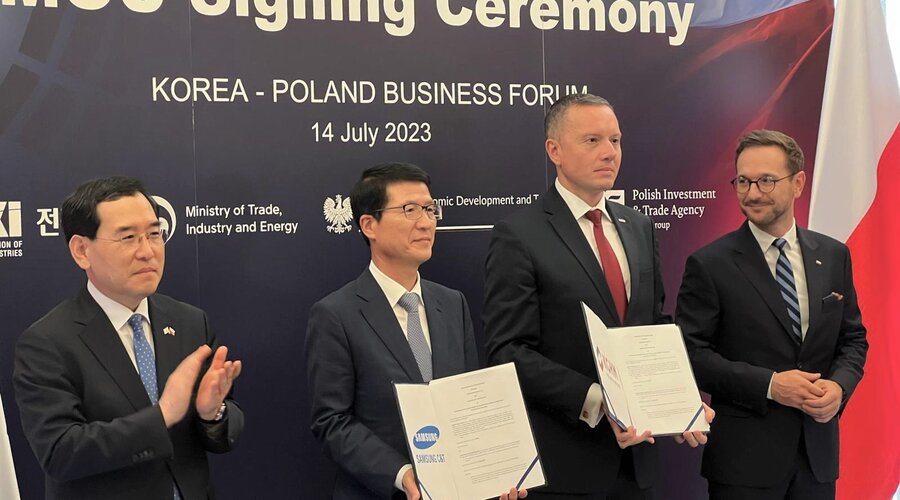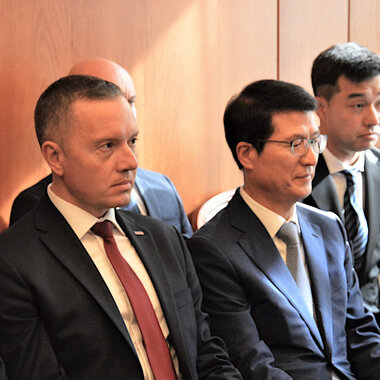KGHM announces cooperation with Samsung. Another step towards decarbonisation
KGHM Polska Miedź S.A. has signed a Memorandum of Understanding with Samsung C&T Corporation regarding cooperation in the implementation of low- and zero-carbon technologies. The companies announced joint activities in the area of renewable energy sources, small modular reactors (SMRs), production and use of hydrogen or carbon capture, utilization and storage (CCSU) technology, which could be used in smelting processes.
- We assume that half of the energy consumed by KGHM will come from our own production, including RES. Already now, our Gas-Steam Units secure nearly 20% of this demand, additionally we are developing RES projects, we are planning to build SMRs and we are exploring the possibility to reach for other technologies, including hydrogen. We are counting on the experience and financial potential that Samsung brings to strengthen our efforts on the way to implementation of technologies related to energy transformation and zero-carbon," said Tomasz Zdzikot, President of the Management Board of KGHM.
- I am very pleased and happy that we can participate in this ceremony with one of the most renowned companies in Poland, KGHM. There are many areas on which we are considering cooperation - not only in Poland, but also on other continents: from renewable energy, decarbonisation, construction and development,' stressed JW Kim, vice-president of Samsung C&T.
The signed Memorandum of Understanding (MoU) is the result of long-lasting talks in which the CEO and management of Samsung C&T met with the management of KGHM at the company's headquarters in Lubin. The copper giant and the Korean Samsung envisage the creation of a dedicated working group consisting of representatives from both companies to exchange information and conduct analytical work in selected project areas.
KGHM ENERGY TRANSFORMATION
Polska Miedź works in accordance with the principles of sustainable development and conducts its operations in such a way that the entire technological sequence is safe, innovative and compliant with the idea of a Closed Circuit Economy. The company's activities and commitments in these areas are contained in its Environmental Policy and Climate Policy, the overarching goal of which is to achieve climate neutrality by 2050. The Sierra Gorda mine in Chile is already 100 per cent powered by renewable energy.
The copper giant's pro-climate measures, including those relating to decarbonisation and reducing energy consumption, are implemented, among others, through rational energy management based on the best European and global standards. KGHM seeks to diversify its energy sources and plans that, by 2030, 50% of the electricity consumed will come from its own sources, including RES.
One of the important projects that will bring the Company closer to achieving energy independence is the implementation of Small Modular Reactor (SMR) technology. In February 2022, an agreement was signed with NuScale Power, LLC ("NuScale") to start work on the implementation of SMR technology in Poland. NuScale's reactor design is based on the well-known light-water pressurised reactor concept, while its modular, integrated design allows for a simplified and shortened investment and construction process.
TECHNOLOGICAL PARTNER FROM KOREA
Samsung C&T is one of the largest technology and construction companies in the world. Its flagship projects include the world's tallest building, the Burj Khalifa, and the Barakah nuclear power plant in the United Arab Emirates. Samsung is also a minority shareholder in NuScale Power, LLC - a US-based supplier of small modular reactor (SMR) technology, with which KGHM signed a pre-development agreement on 14 February 2022.









